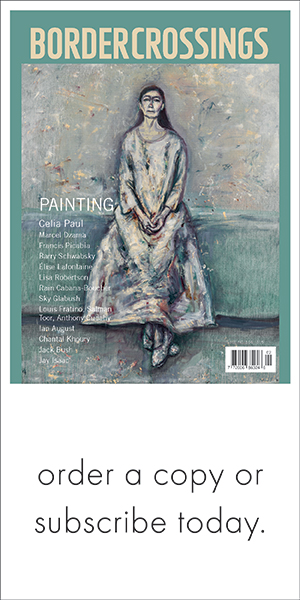Late one night at a racial-healing retreat in the woods of West Virginia, I found myself listening to an intense young man who unexpectedly declared, “I don’t know why everyone is running around to psychologists and psychiatrists when we all have the same problem.” By highlighting the commonality of our suffering, he conveyed what Gabor Maté calls “the compassion of recognition.” In The Myth of Normal: Trauma, Illness & Healing in a Toxic Culture, the renowned doctor describes this as a capacity “to perceive and appreciate that we are all in the same boat, roiled by similar tribulations and contradictions.”
The metaphor might seem odd coming from a man who has witnessed first-hand the kind of debilitating suffering that most people never see. As a former staff physician at North America’s first supervised drug injection site, located in Vancouver’s Downtown Eastside neighbourhood, Maté treated, among others, severely distressed street addicts and Indigenous women working in the sex trade. But “mental health diagnoses are escalating” in people of all ages and backgrounds, he writes. He’s not alone: the Canadian Medical Association Journal confirms opioid- and alcohol-related mortality is on the rise. Meanwhile, anxiety and depression are “the fastest-growing diagnoses” in this country.
Maté’s subject extends well beyond what we routinely call mental illness, however. The Myth of Normal, co-authored with Maté’s son Daniel, is concerned with all readers who have been emotionally injured. In Gabor’s view, trauma is pervasive in contemporary life and consists of “a constellation of hardships, composed of the wound itself and the residual burdens that our woundedness imposes on our bodies and souls.” These include all our unresolved conflicts as well as the coping mechanisms and “neurotic scripts we unwittingly but inexorably live out.” Our accumulated pains can lead to chronic deficits in psychological and physical well-being.
Maté de-emphasizes (without discounting) genetics and the labels used by institutional medicine. “Diagnoses”— like ADHD, depression, and oppositional defiant disorder —“reveal nothing about the underlying events and dynamics that animate the perceptions and experiences in question.” In other words, he is interested in the causes of disease. For that reason, he takes what the psychiatrist George Engel called a “biopsychosocial” approach; Maté recognizes “the unity of emotions and physiology, knowing both to be dynamic processes unfolding in a context of relationships, from the personal to the cultural.” An individual might seek out unavailable or abusive partners or become a people pleaser or a workaholic in an effort to meet some need stemming from neglect experienced as a child, for instance. And the first “wounds” may go back further: paternal and maternal stress can even reach the fetus and influence psychological and biological development.

Are we all a little off balance?
Karsten Petrat
Maté also cites several findings that relate trauma to physical conditions: grieving parents in Denmark show double the average rate of multiple sclerosis; men who have been sexually abused suffer triple the incidence of heart attacks; and African American women who have experienced racial discrimination are more likely to be diagnosed with adult-onset asthma. “As a physician for over three decades,” he explains, “I was always struck by the links between the individual and the social and emotional contexts in which our lives unfold and health or illness ensue.”
While the above examples are compelling, Maté’s discussion of society’s role is less focused and perhaps too sweeping. He is particularly interested in the effects of neo-liberalism, which he helpfully defines as the “erosion of social programs, the increasing power of the corporations, their laissez-faire ideology, and their sway over governments under late-stage capitalism.” Maté makes plausible claims and references numerous correlational statistics. Yet, taken together, these are not enough to establish causation. For instance, he mentions a study by Ted Schrecker and Clare Bambra, two experts in public health who point out that “the timing and international spread of the obesity epidemic mirror the rise and diffusion of neoliberalism.” That may be, but there are myriad factors that track the phenomenon, including the accumulation of microplastics in the environment and our increasingly sedentary lifestyles. Even the low-fat craze of the 1980s and ‘90s has been linked to weight gain. These all might exist even in the absence of neo-liberal policies.
“In our times,” Maté asserts, “the context of all contexts is hypermaterialist, consumerist capitalism and its globalized expressions worldwide.” It’s fair to say that a market-driven society that restricts access to essential goods (like medical care, housing, and education) by treating them as commodities can have a detrimental impact on well-being. But again, Maté’s examples don’t always convince. Take the “rising loneliness epidemic,” which he sees as a consequence of, among other things, the “inexorable monopolization of economic life that shreds local communities.” And he paints a grim picture of suburbia: “People no longer walk to their local establishment, where they meet and greet one another and familiar merchants they have known, but drive, each isolated in their car.” That, or they shop online. Is loneliness less of a problem in urban centres with distinct neighbourhoods, familiar baristas, public transit, and walkable streets? Are such environments less driven by market logic? It’s unclear.
Maté invites us to think about sickness as “an imbalance in the entire organism.” Such a comprehensive and nuanced view necessitates “seeking all the connections and conditions that contribute to illness and health.” It’s an enormous undertaking that rejects the status quo maintained by medical science and broader society. Those very “features of daily life that appear to us now as normal,” he writes, “are the ones crying out the loudest for our scrutiny.” To analyze any of the larger issues mentioned, however, would require another book altogether — or indeed several.
The Myth of Normal does not offer the most rigorous investigation of society’s ills, but Maté’s work with thousands of patients overwhelmingly demonstrates that the “compassion of recognition” is a powerful tool for healing. And a broader perspective more generally might well enable us to pierce through the “occluding effects” of our culture’s idea of normal, whatever that may be.
Salem Alaton is a former Globe and Mail arts reporter and features writer.

